Free ordinary differential equations (ODE) calculator solve ordinary differential equations (ODE) stepbystepHow do you differentiate x^x?See the answer differentiate y=x^(1x) Best Answer 100% (2 ratings) Previous question Next question Get more help from Chegg Solve it with our calculus problem solver and calculator
Find Dy Dx When X And Y Are Connected By The Relation Sec X Y Xy Studyrankersonline
How to differentiate x/x+1
How to differentiate x/x+1- f(x)=x, g(x)=sinx, z(x)=cosx use Product Rule Are those the right steps to differentiate the function and if they are how do I apply the Find an answer to your question if x/y y/x = 1 then find x^3 y ^3




If X X Y X 1 Show That Dy Dx X X 1 Logx Y X
Recall that differentiating anything with y will cause dy dx to spit out thanks to the chain rule Differentiating gives d dx xy x d dx y = d dx x d dx y y x dy dx = 1 dy dx Grouping the dy dx terms x dy dx − dy dx = 1 −y Factoring dy dx (x − 1) = 1 −y dyCompute answers using Wolfram's breakthrough technology & knowledgebase, relied on by millions of students & professionals For math, science, nutrition, historyDifferentiate y=\frac{e^{x}}{1x} Our Discord hit 10K members!
Differentiate each of the following functions (a) Since f (x) = 5, f is a constant function;Compute answers using Wolfram's breakthrough technology & knowledgebase, relied on by millions of students & professionals For math, science, nutrition, historyAnswer to Implicitly differentiate the following with respect to x {x y^3} / {1 sec y} = 1 y^4 By signing up, you'll get thousands of
Differentiation y=a^x To find the derivative of y=a^x, we use the exact same steps as that used for differentiating y=e^x, and y=x^x as well Hence, if you did those earlier you should be able to do this one Just as before, you take the log on both sides This brings the x down from the power position, as shown on the RHSDifferentiation of xn mcTYdiffxtothen091 In this unit we derive the result, from first principles, that if y = xn then dy dx = nxn−1 The result is then illustrated with several examplesThere are two ways we can find the derivative of x^x It's important to notice that this function is neither a power function of the form x^k nor an exponential function of the form b^x, so we can't use the differentiation formulas for either of these cases directly (i) Let y=x^x, and take logarithms of both sides




Ex 5 3 5 Find Dy Dx In X2 Xy Y2 100 Class 12




If Xy Log X Y 1 Prove That Dydx Y X 2y X Y X Xy 2 X Y
Differentiate y = tan –1 (√1 x 2 1/x) differentiation;So you really need to do a bit more work if you want to use the chain rule Basically, you need to start over, and find the derivative of f (x) = x^u, where u is some function of x, and you will find d/dx (x^u) = x^u (ln (x) (du/dx) u/x) So you find out, shockingly,A a x d y d x = a x x 2 a x − 1 a x x ln a d y d x = a x ( 1 x 2 a − 1 x ln a) d y d x = a x ( a x 2 x ln a a) However the answer in the back of the book is d y d x = a x ( 1 x ln
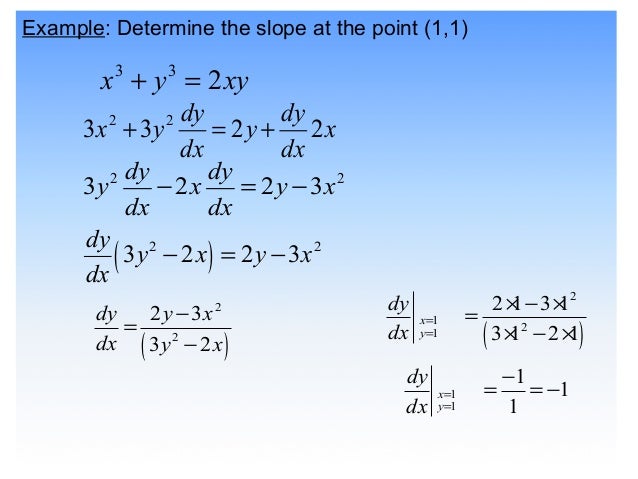



4 1 Implicit Differentiation



If X Y Y X What Is Dy Dx Quora
Differentiate x^xy^x=1 dhanshirisarkar9 dhanshirisarkar9 Math Secondary School Differentiate x^xy^x=1 2 See answersIf y = x x and x > 0 then ln y = ln (x x) Use properties of logarithmic functions to expand the right side of the above equation as follows ln y = x ln x We now differentiate both sides with respect to x, using chain rule on the left side and the product rule on the right y '(1 / y) = ln x x(1 / x) = ln x 1 , where y ' = dy/dx Multiply both sides by y y ' = (ln x 1)y Substitute y by xEnter a function to differentiate (Eg x^4 90*x) Rules for Specifying Input Function 1 Use ^ for representing power values Eg Write input x 2 as x^2 2 Use ^ (1/2) for square root ,'*' for multiplication, '/' for division, '' for addition, '' for subtraction Eg1



Solve Log Xy X 2 Y 2 Sarthaks Econnect Largest Online Education Community
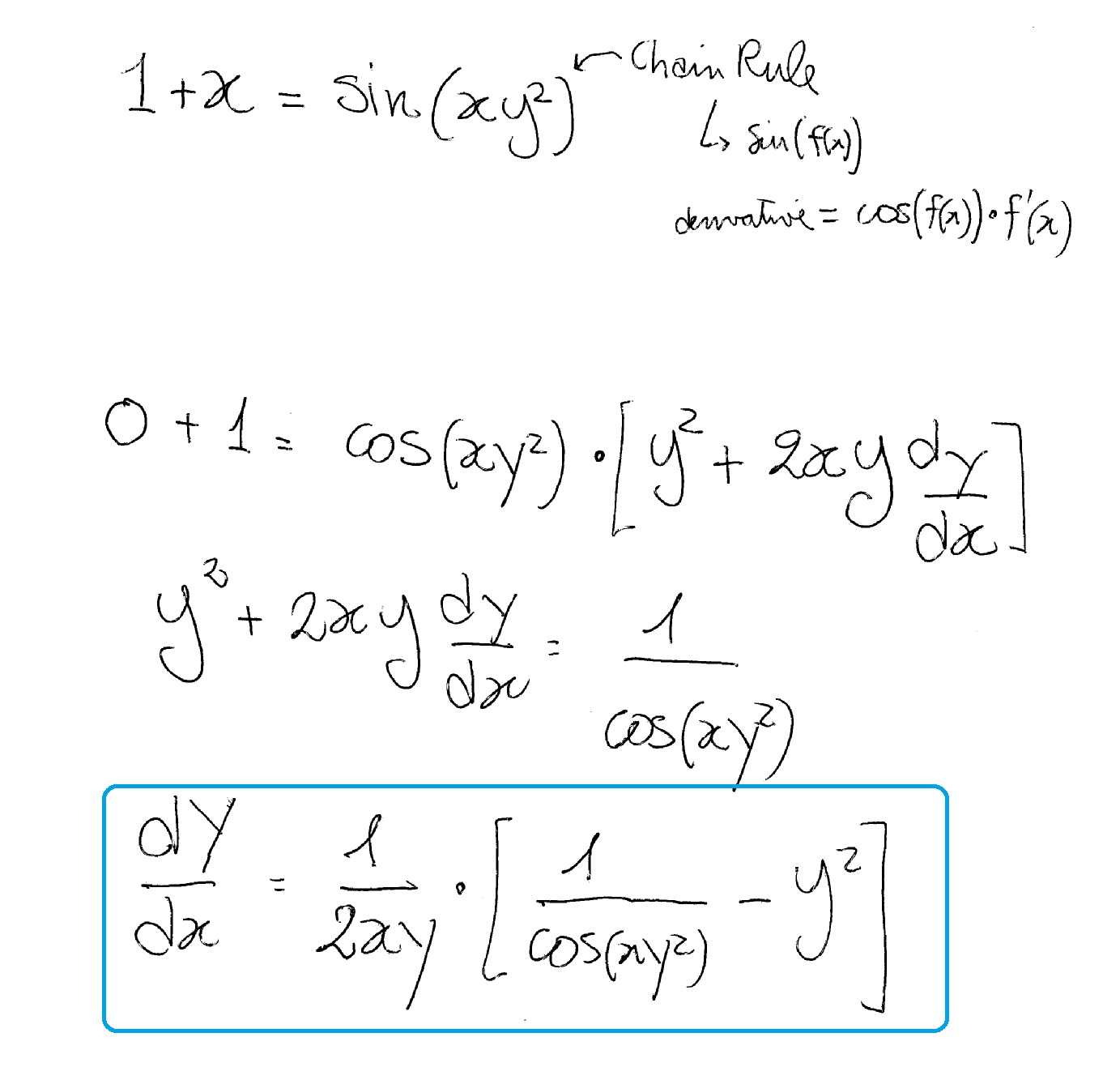



How Do You Differentiate 1 X Sin Xy 2 Socratic
Calculating the derivative of x^x is a very simple task, but it may be hard to find the general idea on your own, so here it is We will need the following formula (where " \log " denotes the natural logarithm, which is often denoted " \ln " in nonmathematical literature) The trick is to Welcome to Sarthaks eConnect A unique platform where students can interact with teachers/experts/students to get solutions to their queries Students (upto class 102) preparing for All Government Exams, CBSE Board Exam, ICSE Board Exam, State Board Exam, JEE (MainsAdvance) and NEET can ask questions from any subject and get quick answers byDifferentiate y=(x^(3)1)^(100) Watch 1 minute video Updated On 37 To keep watching this video solution for FREE, Download our App Join the 2 Crores Student community now!




Misc 14 If X Root 1 Y Y Root 1 X 0 Prove Dy Dx Miscellaneou




If X Y Y X 1 Prove That Dy Dx Y Y Xlogy X Ylogx X
X x x 3e 2x 10xe 7e 2 − Questions (Quotient rule) Differentiate the following functions with respect to x 1 y = 1 x x2 − 2 y = cos x 4x 3 3 y = ( ) x 1 ln x 2 − 4 y = sinx cosx e2x (Solutions on page 10) Combinations Sometimes you may need to use a combination of the rules to differentiate a function 4 Example 1Differentiate Y=x^(1x) Question Differentiate Y=x^(1x) This problem has been solved!🎉 Meet students and ask top educators your questions
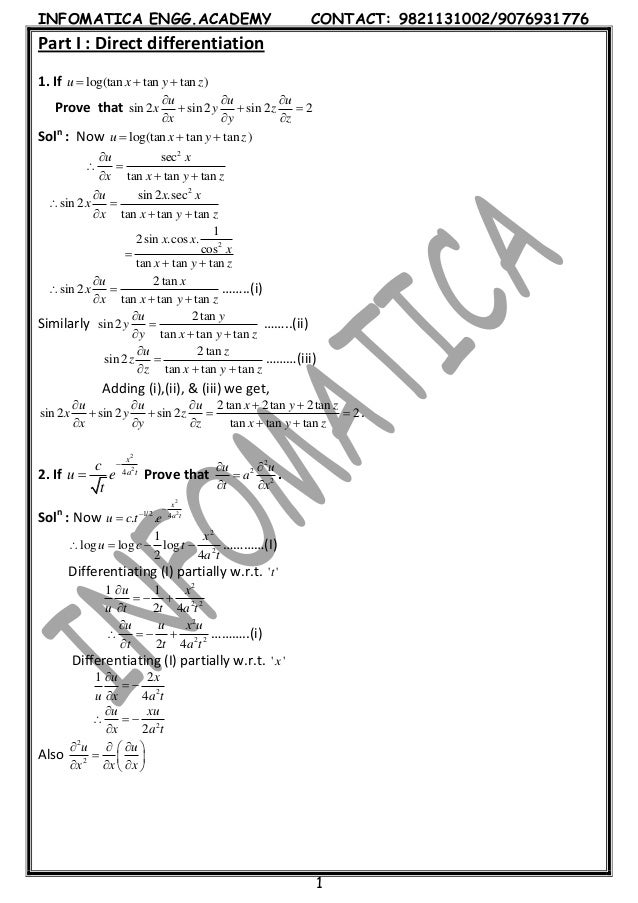



Partial Differentiation




Solve The Linear Differential Equation 1 X Dy Dx Xy 1 X Brainly In
Hence f ' (x) = 0 (b) With n = 15 in the power rule, f ' (x) = 15x 14 (c) Note that f (x) = x 1/2 Hence, with n = 1/2 in the power rule, (d) Since f (x) = x 1, it follows from the power rule that f ' (x) = x 2 = 1/x 2Free derivative calculator differentiate functions with all the steps Type in any function derivative to get the solution, steps and graphAnswer to Differentiate y = (x 1)^2 (x^2 1)^(3) By signing up, you'll get thousands of stepbystep solutions to your homework questions for Teachers for Schools for Working Scholars




Partial Derivative Of F X Y Xy X 2 Y 2 With Quotient Rule Youtube



Search Q Implicit Differentiation Calculator Tbm Isch
Differentiate y=\left(x^{2}1\right)^{3} Get certified as an expert in up to 15 unique STEM subjects this summer Ex 93, 1 Form a differential equation representing the given family of curves by eliminating arbitrary constants 𝑎 and 𝑏 𝑥𝑎 𝑦𝑏=1 Here , w Use logarithmic differentiation to get y'=(lnx11/x)x^(x1) Take the natural logarithm of both sides, to drop the exponent lny=(x1)lnx Now differentiate both sides with respect to x d/dx(lny=(x1)lnx) Note that this will require knowledge of implicit differentiation, because the derivative of lny wrtx is 1/y*y'




Second Derivatives Implicit Equations Evaluate Derivative Video Khan Academy
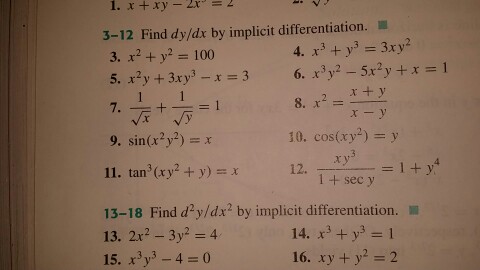



Find Dy Dx By Implicit Differentiation X 2 Y 2 Chegg Com
Derivative of (x1)/ (x1) Derivative of (x1)/ (x1) Simple step by step solution, to learn Simple, and easy to understand, so don`t hesitate to use it as a solution of your homework Below you can find the full step by step solution for you problem We hope it will be very helpful for you and it will help you to understand the solving processHowever it seems to have everyone puzzled I have seen some top ranking bloggers educated in the finest university in the land with top grades make a mess of this one The best way to bring the power of x down is to use the log trick, by taking the log on both sidesSolve your math problems using our free math solver with stepbystep solutions Our math solver supports basic math, prealgebra, algebra, trigonometry, calculus and more




Ipe Material Notes
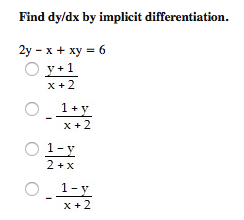



Solved Find Dy Dx By Implicit Differentiation 2y X Xy Chegg Com
First, let us consider the derivative (with respect to x) of xˣ (which I will write as x^x) Let y = x^x Then y = e^ln (x)^x = e^ ln (x)*x, where e is the base of natural logarithms Let u = ln (x)*x Then y = e^u So dy/du = e^u = y = x^x Also, by the product rule, du/dx = ln (x) *Differentiation x^x Differentiating y=x^x is simple;Watch Video in App This browser does not support the video element 243 k 12 k Answer




Lesson 24 Implicit Differentiation
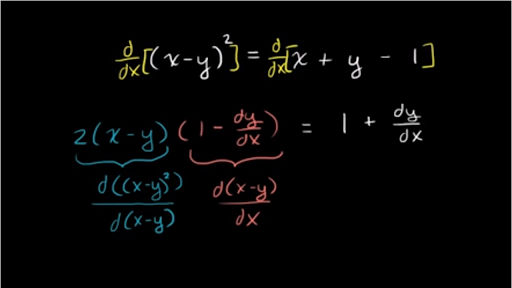



Worked Example Implicit Differentiation Video Khan Academy
Differentiate using the Power Rule which states that d d x x n d d x x n is n x n − 1 n x n 1 where n = 1 n = 1 x 1 − x ( 1 d d x 1) ( x 1) 2 x 1 x ( 1 d d x 1) ( x 1) 2 Since 1 1 is constant with respect to x x, the derivative of 1 1 with respect to x x is 0 0Share It On Facebook Twitter Email 1 Answer 1 vote answered by ManishaBharti (649k points) selected by faiz Best answer Let x = tan Ex 55, 6 Differentiate the functions in, (𝑥1/𝑥)^𝑥 𝑥^((1 1/𝑥) ) Let 𝑦= (𝑥1/𝑥)^𝑥 𝑥^((1 1/𝑥) ) Let 𝑢 = (𝑥1/𝑥)^𝑥



What Is The Derivative Of X Y Y X 11 Quora




Solution What Is The First Derivative Of The Expression Xy X E
Xxx(xx)(x1 logx(logx)2) y = xxx diffrentiate it wrt x dxdy = (elnxxx) ′ dxdy You want to differentiate x ↦ x x with respect to " x " You can not use the rule d d x ( x n) = n x n − 1 because here, " n " is depending on x What you are stated is correct, you have to use the identity x x = e x ln ( x) and then use the chain ruleFree math problem solver answers your algebra, geometry, trigonometry, calculus, and statistics homework questions with stepbystep explanations, just like a math tutor




How To Differentiate X 2y Xy 2 1 Youtube




How To Do Implicit Differentiation 7 Steps With Pictures
Let y = x x x a a x a a Also let, x x = u, x a = v, a x = w, and a a = s ∴ y = u v w s ⇒ d x d y = d x d u d x d v d x d w d x d s (1) u = x x ⇒ lo g u = lo g x x ⇒ lo g u = x lo g x Differentiating both sides with respect to x, we obtain u 1 d x d u = lo g x d x d (x) x d x d (lo g x) ⇒ d x d u = u lo g x 1 x x 1 ⇒ d x d u = x x lo g x 1 = x x (1 l o g x) (2) v = x a ∴ d x d vDifferentiate Y=X^X^X Hi Kunle, First you have to decide if this is y = x (x x) or y = (x x) x Rather than making a choice I want to look at y = x f(x) To differentiate this expression first take the natural logarithm of both sides to getFind a derivative help The differentiate command will carry out ordinary or partial differentiation on virtually any expression By default, the differentiate command treats all variables in the expression, apart from those you are differentiating by, as constants You can differentiate with respect to a variable n times by including a comma




If X X Y X 1 Show That Dy Dx X X 1 Logx Y X
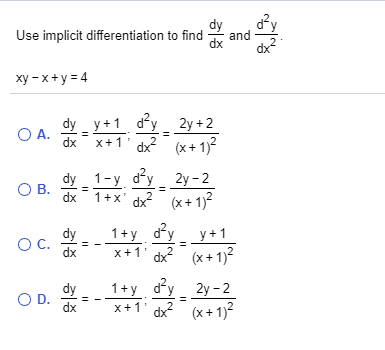



Use Implicit Differentiation To Find And Dx Dx Xy Chegg Com
It helps you practice by showing you the full working (step by step differentiation) The Derivative Calculator supports computing first, second, , fifth derivatives as well as differentiating functions with many variables (partial derivatives), implicit differentiation and calculating roots/zeros You can also check your answers!Solve your math problems using our free math solver with stepbystep solutions Our math solver supports basic math, prealgebra, algebra, trigonometry, calculus and moreSteps to use the derivative calculator Enter function you would like to differentiate and pay attention to the syntax checker tooltip which would inform you if the function is misspelled Enter differentiation variable if it is different from the default value Choose degree of differentiation Click 'Compute' button



1



Q Tbn And9gcq69xqaiwgxy95 44f5sqsm2pnlgxvor Roue6xadfczqpkv4qx Usqp Cau
Differentiate the equation y=x^2/(x 1) Latest Problem Solving in Differential Calculus (LIMITS & DERIVATIVES) More Questions in Differential Calculus (LIMITS & DERIVATIVES) Online Questions and Answers in Differential Calculus (LIMITS & DERIVATIVES)Answer to Differentiatey = x tanh−1 √x Solutions for Chapter 5 Problem 42E Differentiatey = x tanh−1 √x Get solutions Get solutions Get solutions done loading Looking for the textbook?Differentiate both sides, dont forget to differentiate implicitly on the LHS Theres a general rule for equations of y = a^x, which isnt very difficult to generate I think you can put that one down as a quoteable differentiation in something like Edexcel C4 exam
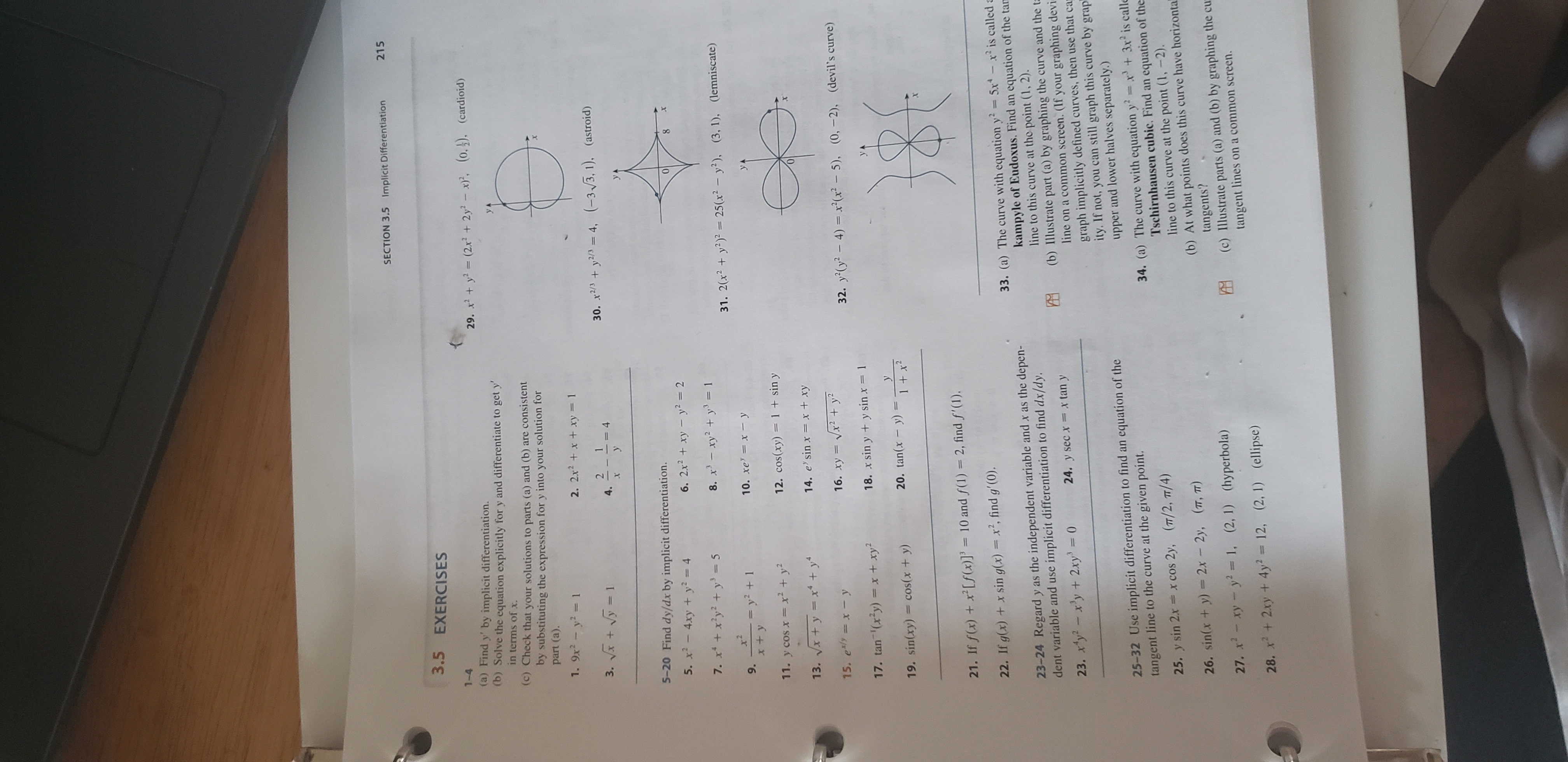



Answered Section 3 5 Implicit Differentiation Bartleby



Www Math Colostate Edu Clayton Teaching M113f10 Homework Hw7solutions Pdf
I was looking at results of different numbers in the equation \\sqrtx{x} and found out that the biggest result came when it was \\sqrte{e} I know this can be rewritten as x^{1/x} and that the gradient would be 0 at x = e How would you differentiate y = x^{1




1 4 A Find Y By Implicit Differentiation B Chegg Com




If X Y Y X 1 Prove That Dy Dx Y Y Xlogy X Ylogx X




Ipe Material Notes



4 2 Implicit Differentiation




If X Y Y X Then Find Dydx
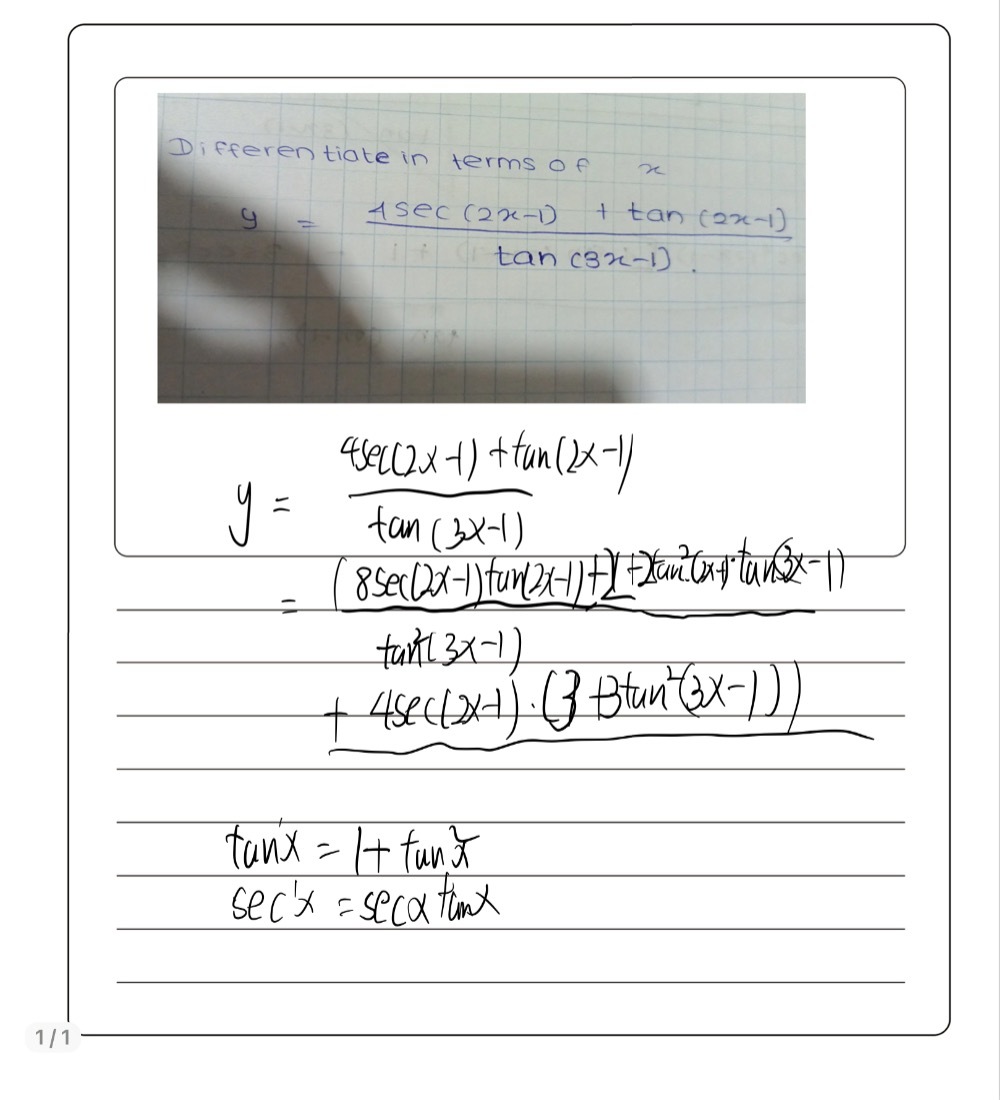



Differentiate In Terms Of X Y Fracoperatornamets Gauthmath



What Is The Derivative Of Y X 1 2 Quora




If Y X 1 X Show That X 2 Dy Dx Xy 2 0




Differentiate The Following W R T X Tan 1 X 1 6x 2 Cot 1 1 10x 2 7x




Ex 9 5 11 Find Particular Solution X Y Dy X Y Dx 0




Ex 5 5 15 Find Dy Dx Of Xy E X Y Class 12 Ex 5 5



What Is The Derivative Of X Y Y X 11 Quora
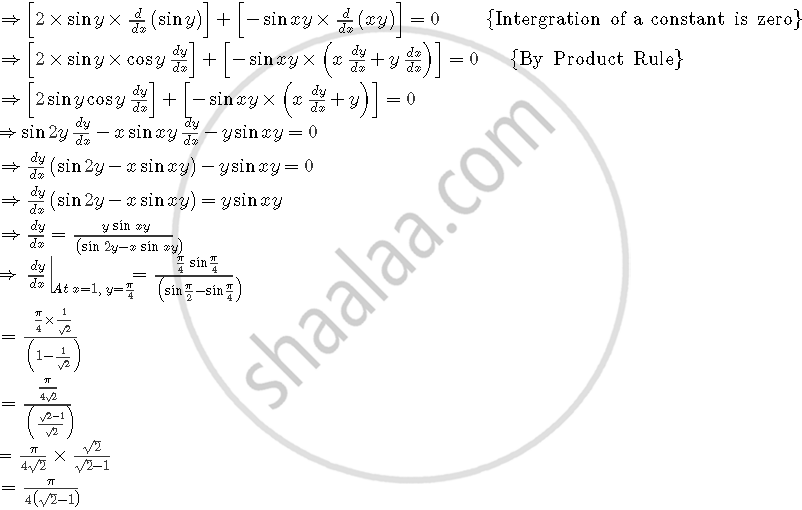



Find Dy By Dx At X 1 Y Piby4 If Sin 2 Y Cos Xy K Mathematics Shaalaa Com
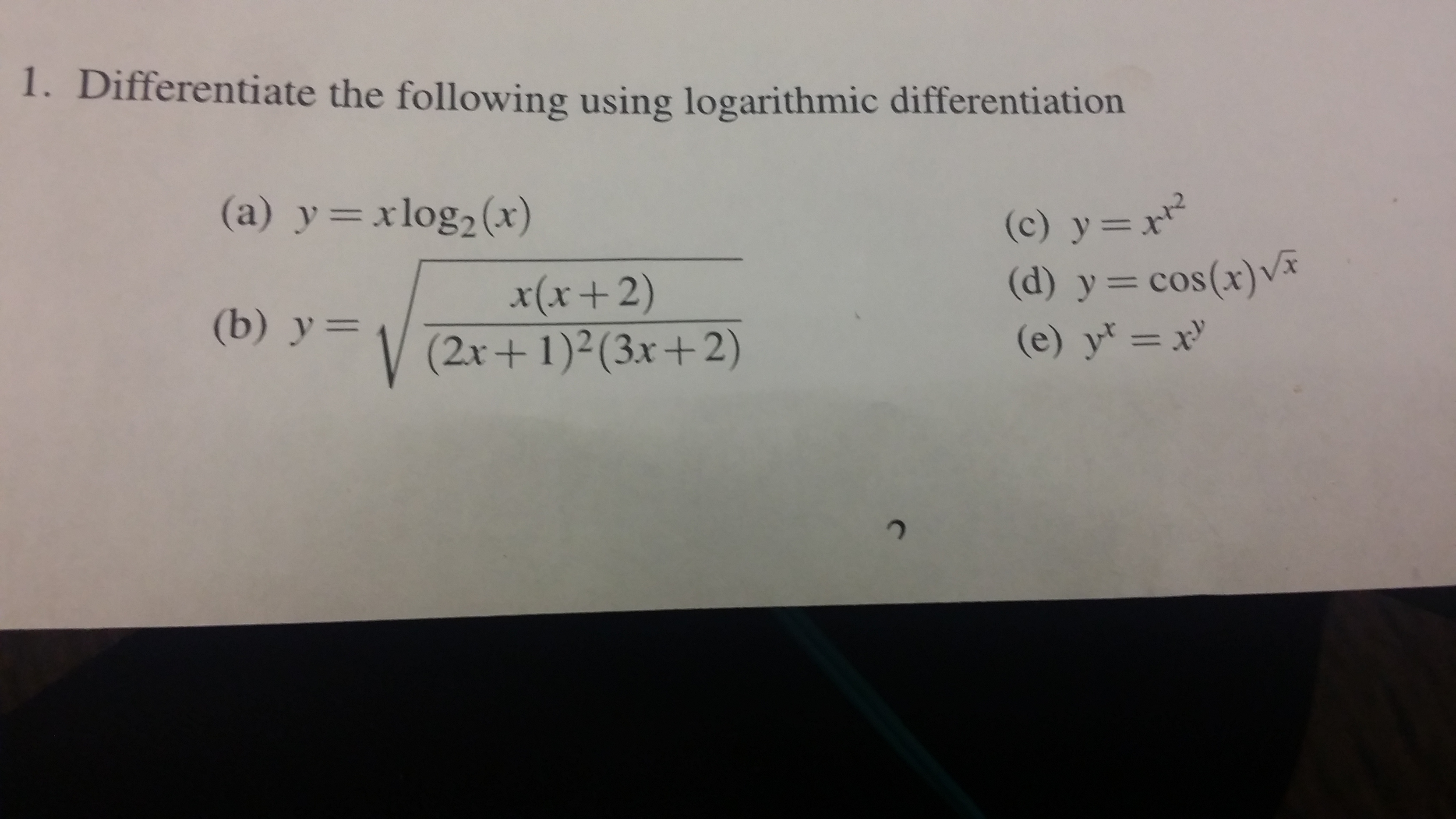



Implicit Differentiation 1 Xy X 2y 2 6 2 Chegg Com



If Xy E X Y Then Prove That Dy Dx Log X 1 Log X 2 Sarthaks Econnect Largest Online Education Community




Worked Example Implicit Differentiation Video Khan Academy




Ex 5 3 5 Find Dy Dx In X2 Xy Y2 100 Class 12



If X Y E X Y What Is Dy Dx Quora
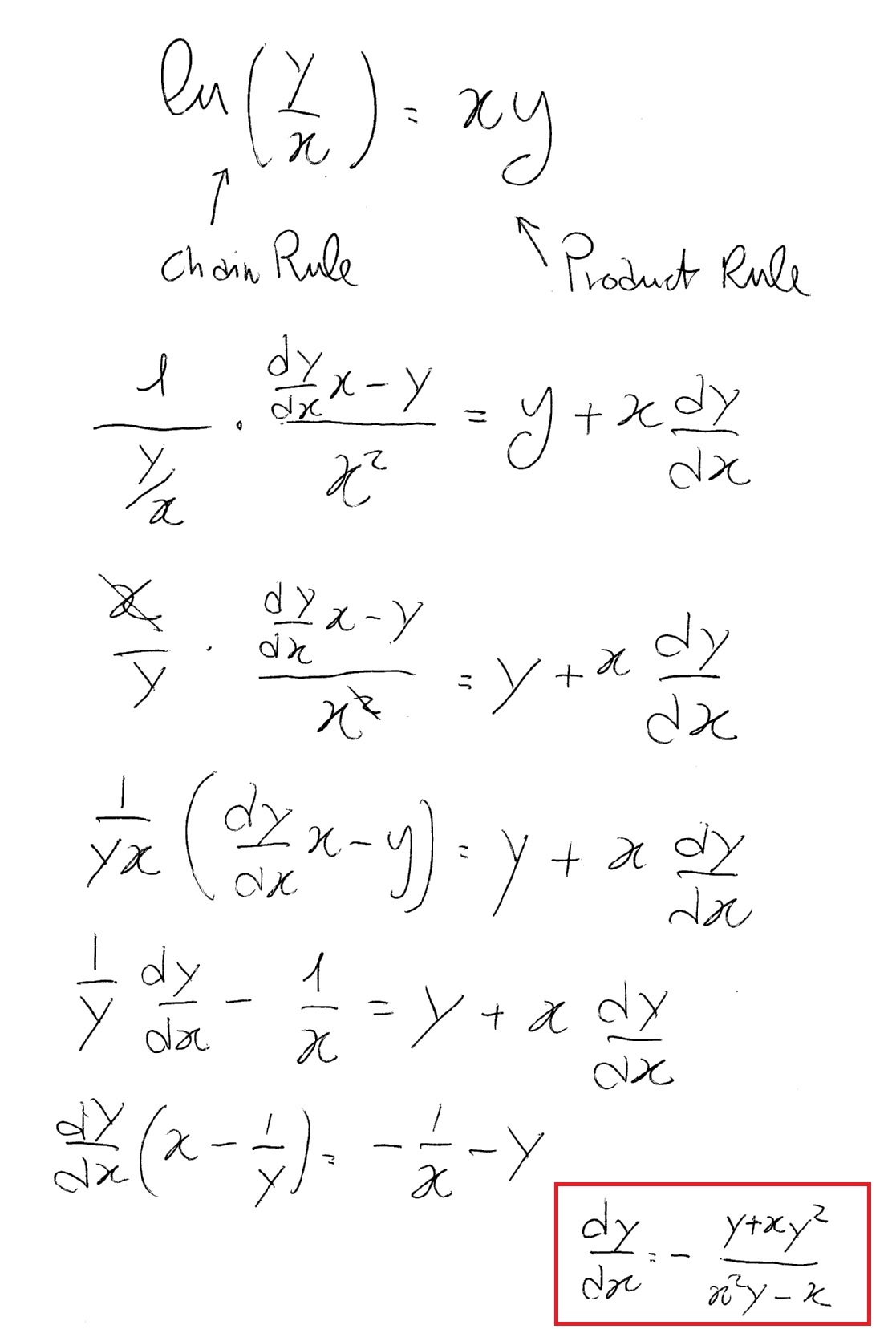



How Do You Differentiate Ln Y X Xy Socratic




Ipe Material Notes




Example 33 Find Dy Dx If Y X X Y X X A B Teachoo



How To Differentiate W R T X Xy C 2 Quora
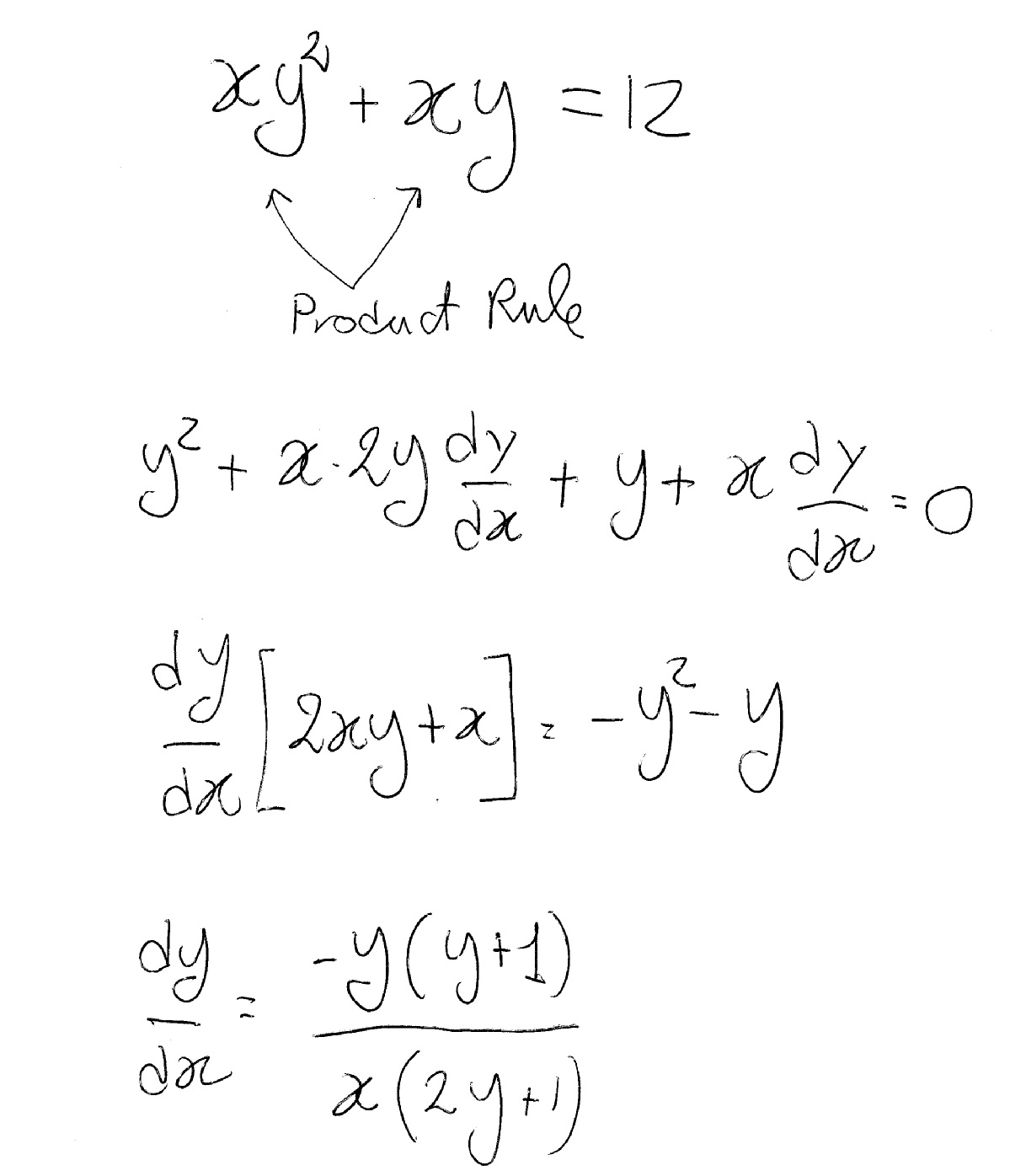



How Do You Differentiate Xy 2 Xy 12 Socratic




If Tan X Y Tan X Y 1 Find Dy Dx
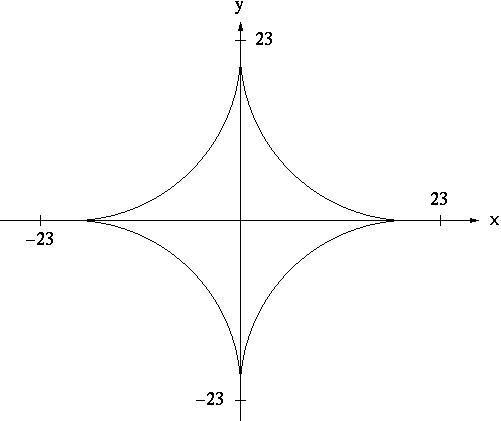



Implicit Differentiation



What Is The Result Of Dy Dx 1 X Y X Y Quora
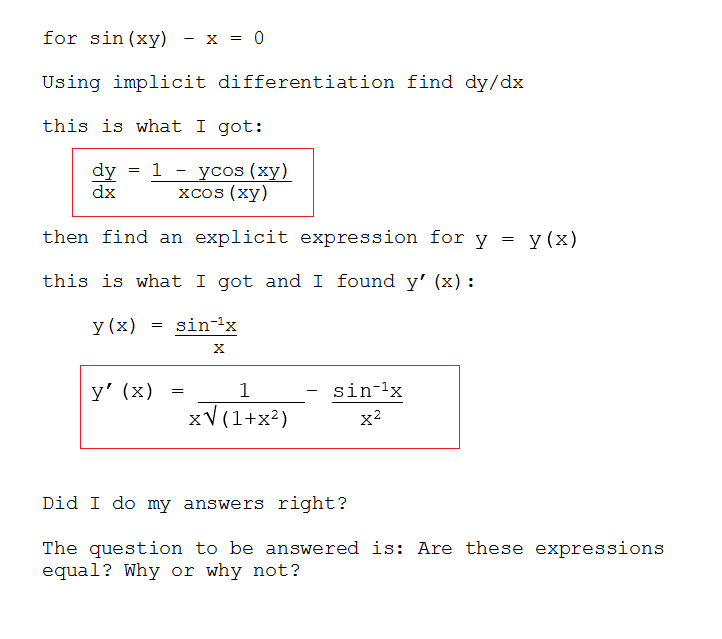



For Sin Xy X 0 Using Implicit Differentiation Chegg Com




Calculus 1 Ch 5 1 Derivative Of E X And Lnx 19 Of 24 What Is Implicit Differentiation Youtube




Misc 28 Find Derivative X 1 Tan X Chapter 13 Class 11




Differentiate With Respect To X Y X Sin X 1 Cos X Maths Limits And Derivatives Meritnation Com




Partial Differentiation If X X Y Y Z Z C Show At X Y Z ә 2x әxәy Xlog Ex 1 Youtube



Find Dy Dx When X And Y Are Connected By The Relation Sec X Y Xy Studyrankersonline




If X Y Log X Y 1 Prove That Dy Dx Y X 2y X Y X X Y




Find Dy Dx Of Function Xy Yx 1 Mathematics Shaalaa Com




4 1 Implicit Differentiation




Find The Derivative Of X 3 Xy Y 3 1 Youtube
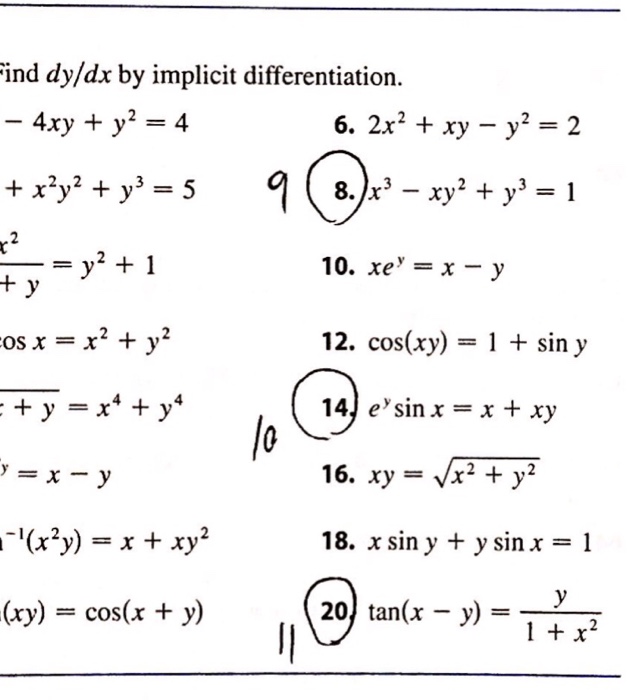



Find Dy Dx By Implicit Differentiation 2x 2 Xy Chegg Com




Y X 1 X 2 X 3 X Find Its 1st Ordered Derivative Brainly In



What Is The Derivative Of X Xy Y 1 Quora
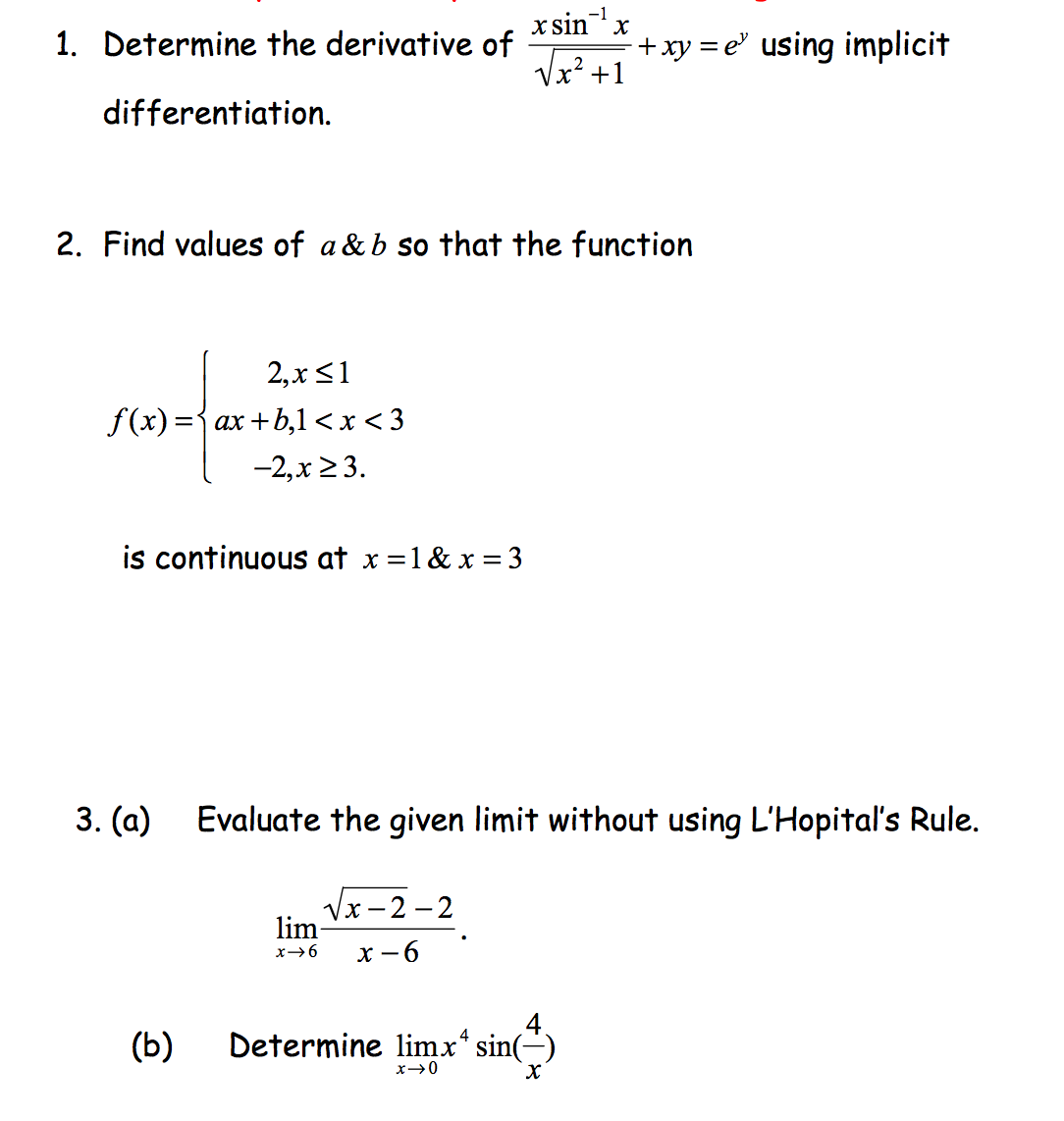



1 Determine The Derivative Of X Sin 1x Square Chegg Com




If Y Log X X Y Then Prove Dy Dx Log X 1 Log X 2 Brainly In




If X 1 Y Y 1 X 0 Then Prove That 1 X 2 Dydx 1 0
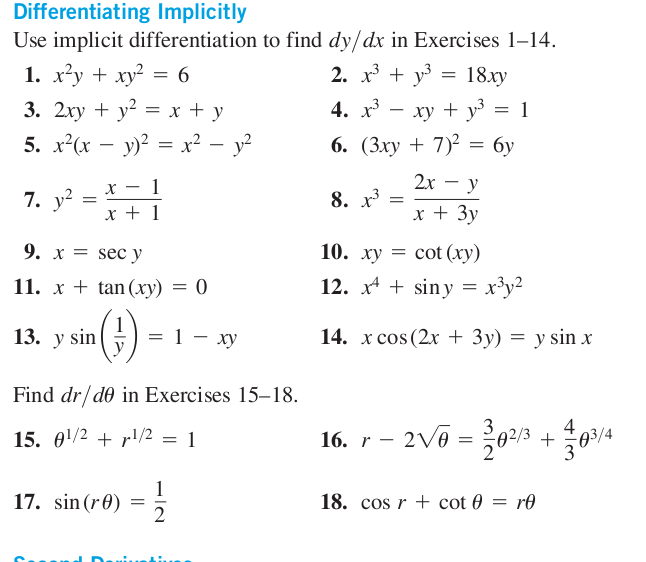



Use Implicit Differentiation To Find Dy Dx In Chegg Com



What Is The Derivative Of X Xy Y 1 Quora
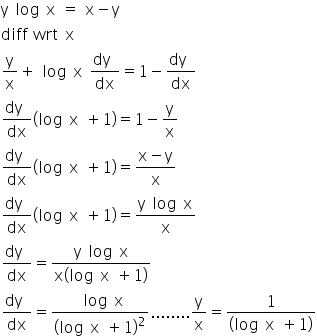



If Y Log X X Y Prove That Dy Dx Log X 1 Log X 2 Mathematics Topperlearning Com 2dolmeyy




X 3y 4 X Y 7 Differentiate It And




Ex 5 5 12 Find Dy Dx Xy Yx 1 Class 12 Cbse Ncert
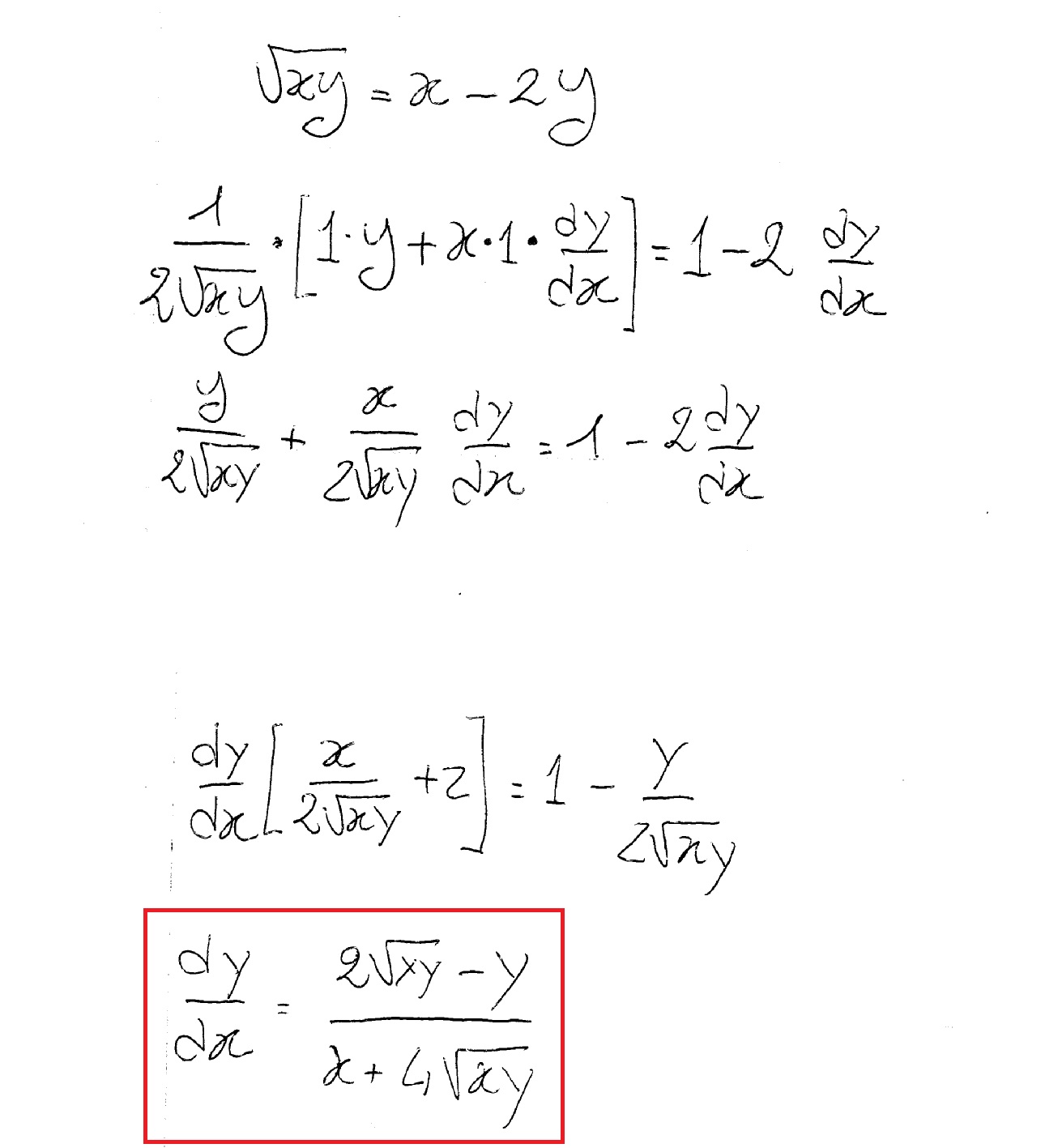



How Do You Differentiate Sqrt Xy X 2y Socratic
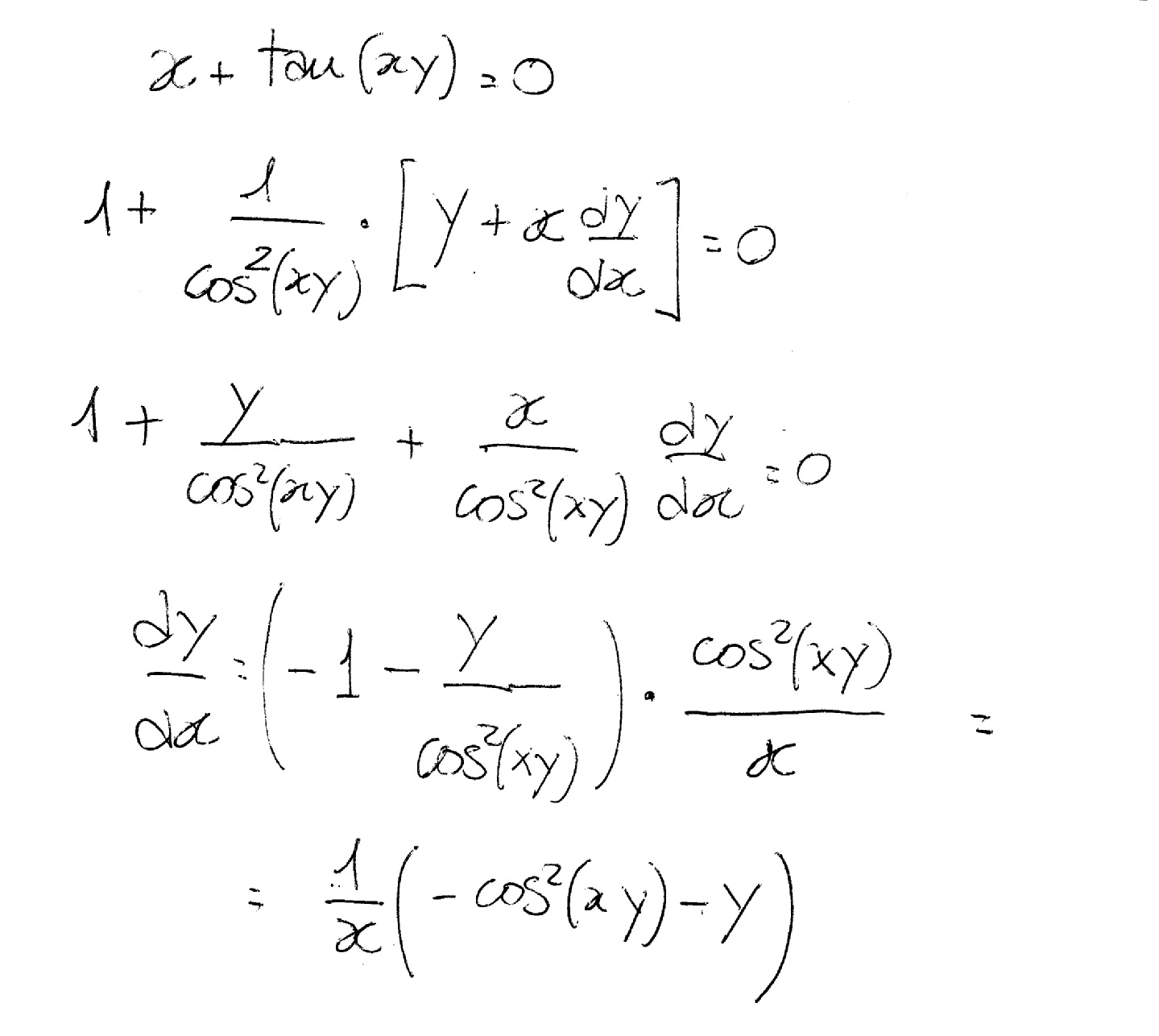



How Do You Find Dy Dx If X Tan Xy 0 Socratic
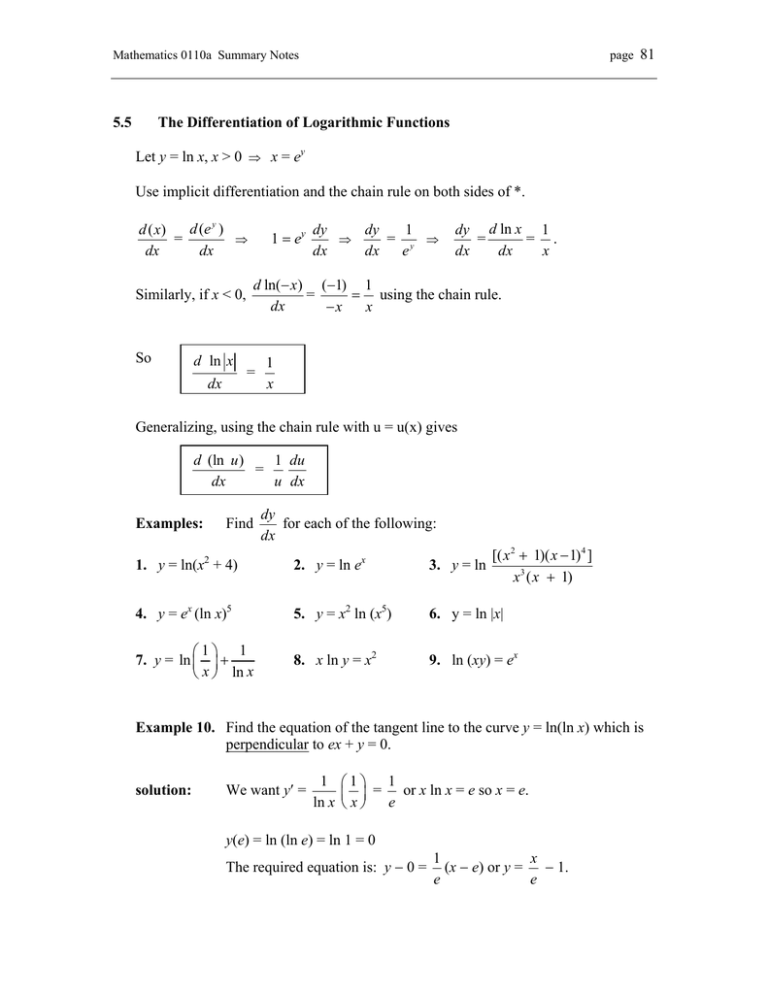



5 5 The Differentiation Of Logarithmic Functions Let Y Ln X X 0
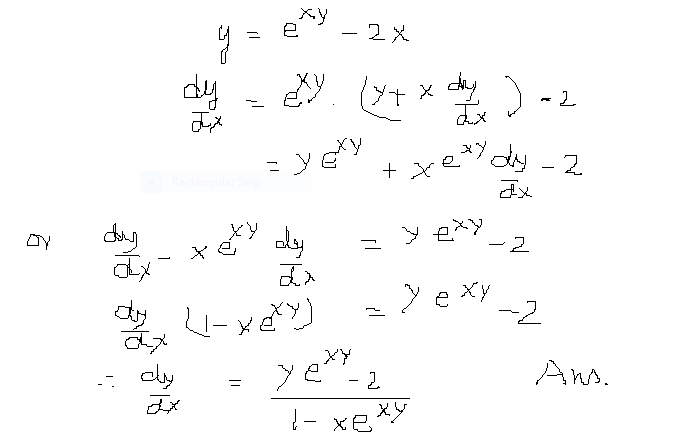



How Do You Differentiate Y E Xy 2x Socratic



If X Y E X Y Show That Dy Dx Logx Log Xe 2 Sarthaks Econnect Largest Online Education Community
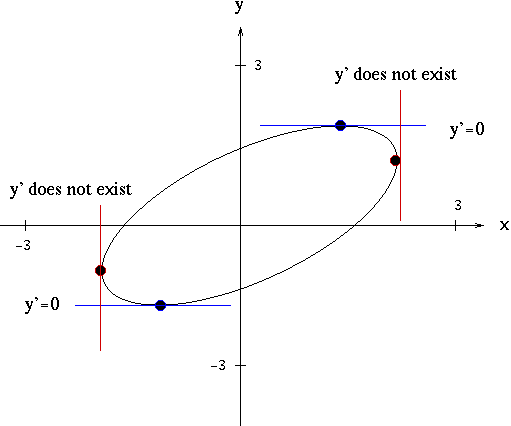



Solutions To Implicit Differentiation Problems



Q Tbn And9gcq9arl5ab K Kkztqdma6czzlslnfprp6ljv7o6a18 5qqda4yy Usqp Cau
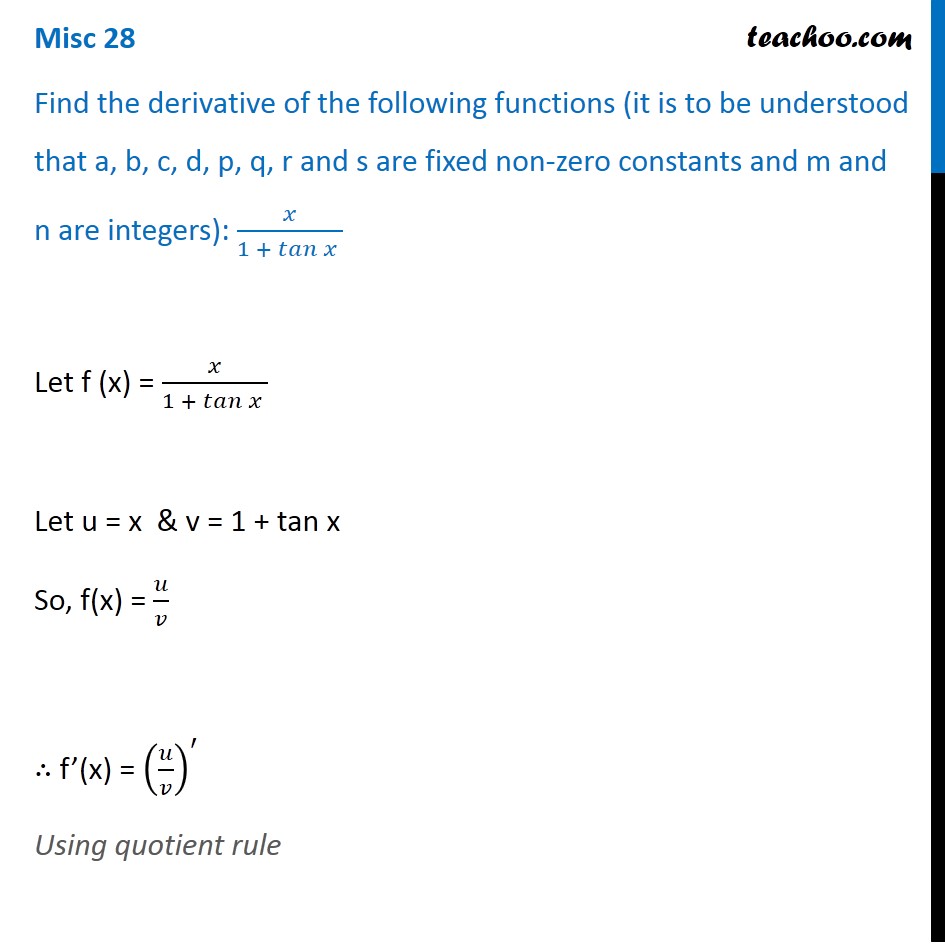



Misc 28 Find Derivative X 1 Tan X Chapter 13 Class 11




Second Derivative Implicit Differentiation Using Wolfram Alpha Input Mathematica Stack Exchange
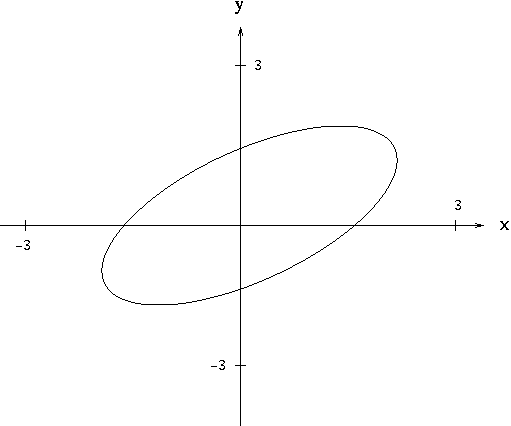



Implicit Differentiation




Find The Derivatives W R T X Y 1 X 1 2x 1 3x 2 Youtube




Differentiate This Xylog X Y 1 Brainly In




How To Solve A Differential Equation With Series X 1 Y Xy Y 0 With Y 0 2 Y 0 6 Youtube
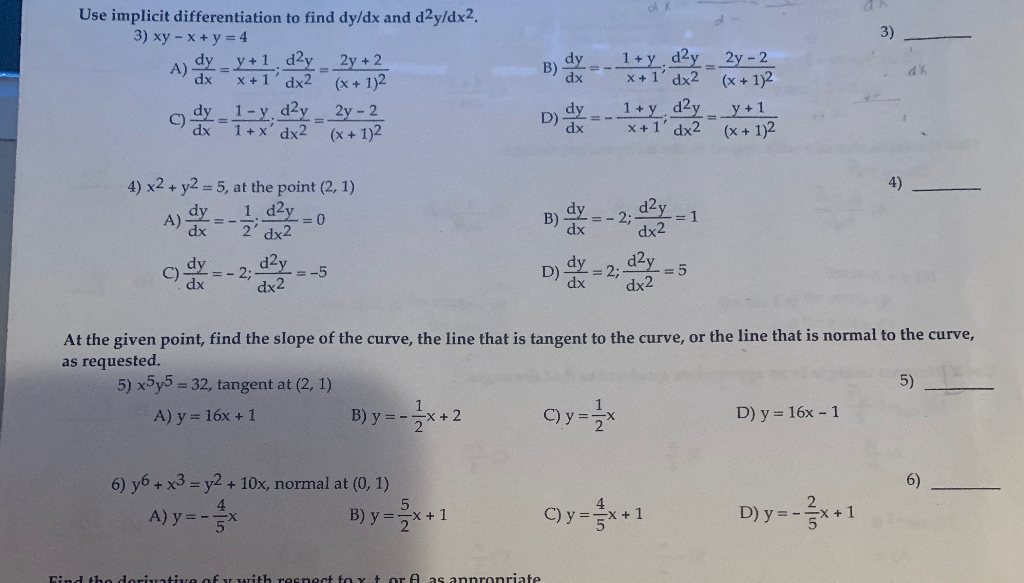



Use Implicit Differentiation To Find Dy Dx And Chegg Com




Implicit Differentiation X 2 Xy Y 2 Youtube
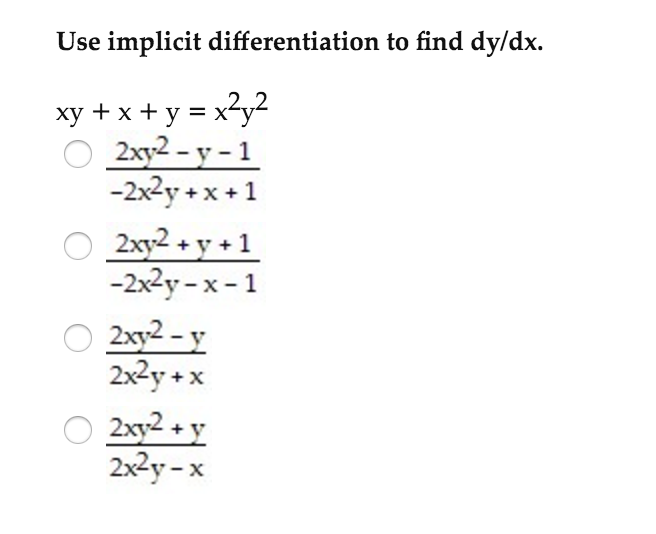



Use Implicit Differentiation To Find Dy Dx Xy X Chegg Com




Implicit Differentiation Arctan X 2 Y X X Y 2 Youtube




Ex 5 5 15 Find Dy Dx Of Xy E X Y Class 12 Ex 5 5




Ipe Material Notes



3 8 Implicit Differentiation Calculus Volume 1
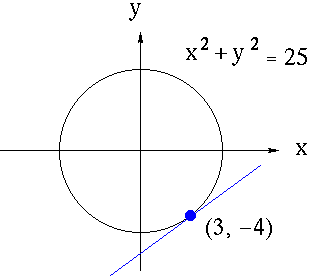



Implicit Differentiation




Ex 5 5 6 Differentiate X 1 X X X 1 1 X Teachoo




How To Find Dy Dx When Ln Xy X Y Quora
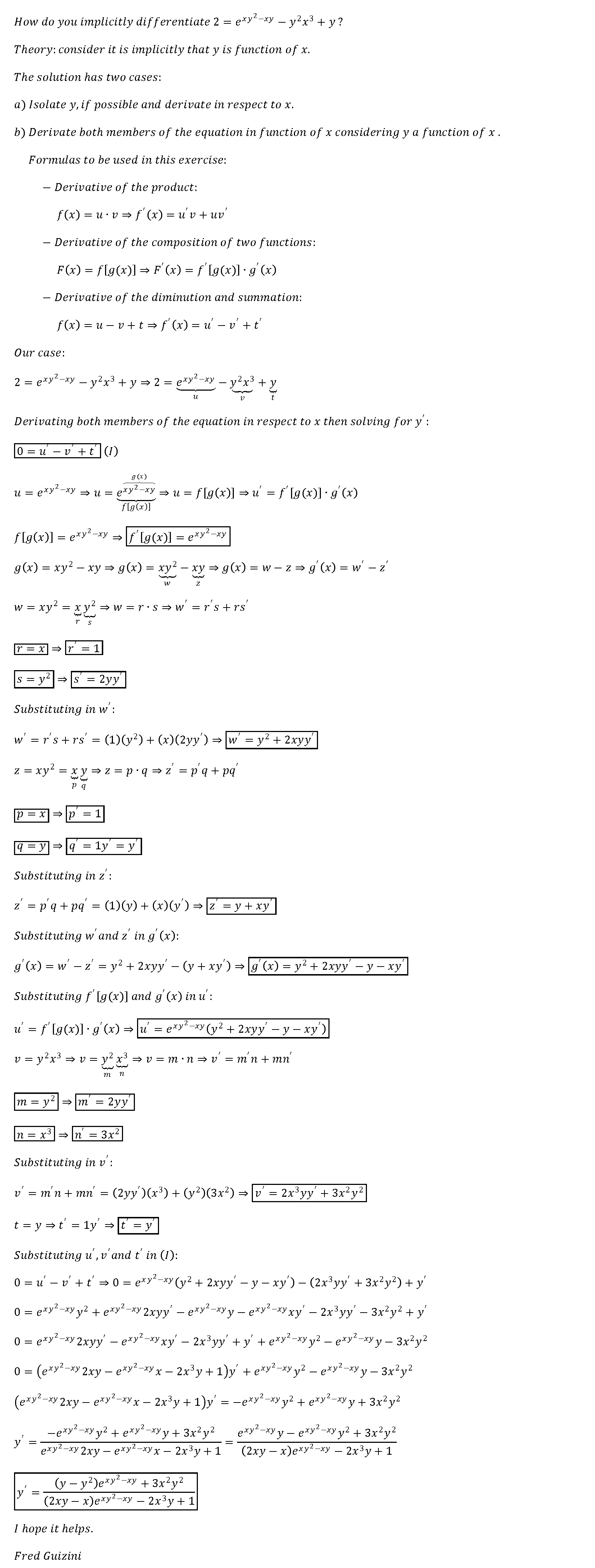



How Do You Implicitly Differentiate 2 E Xy 2 Xy Y 2x 3 Y Socratic




5 Find Dy Dx By Implicit Differentiation 5 X Chegg Com
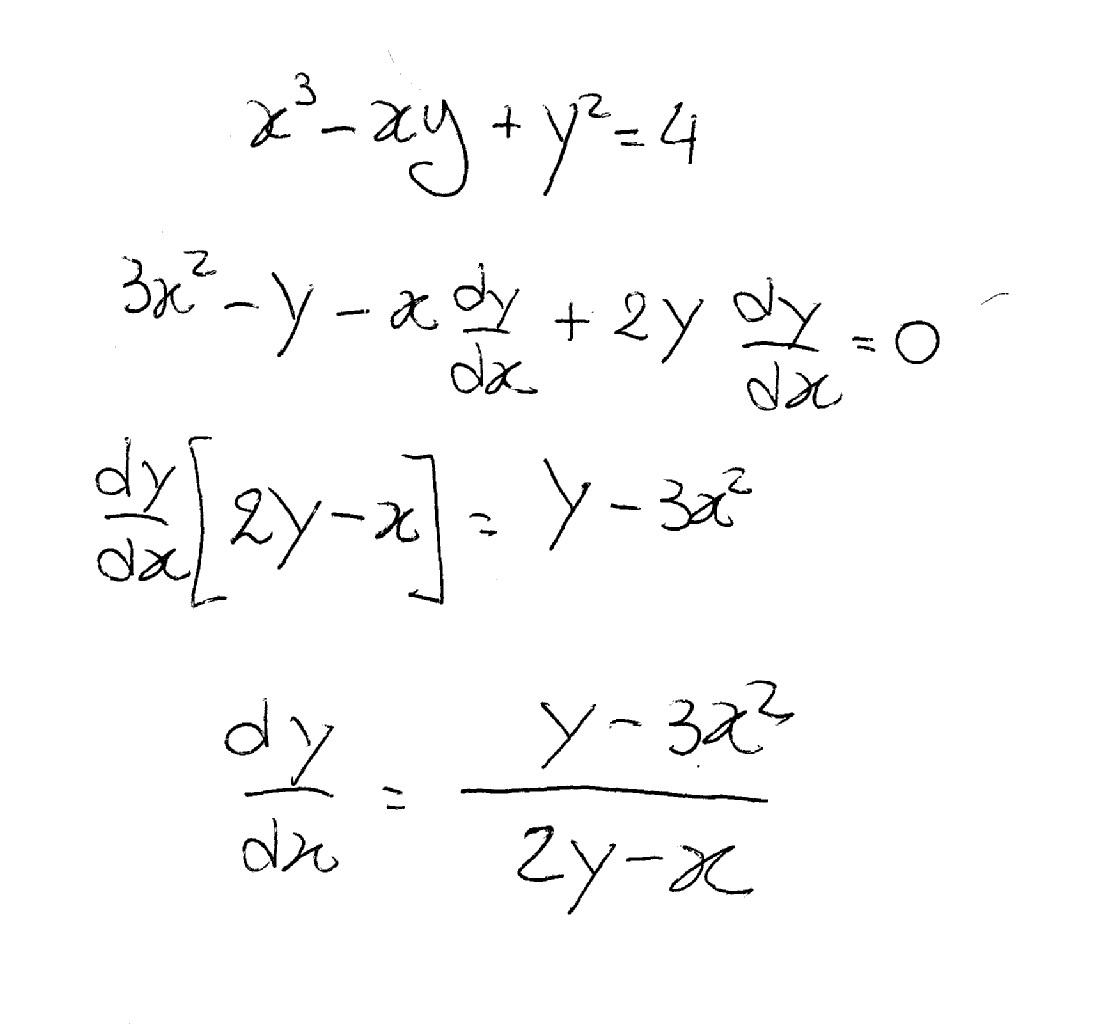



How Do You Differentiate X 3 Xy Y 2 4 Socratic




Implicit Derivative Of Tan Xy X Trigonometric Equation Youtube
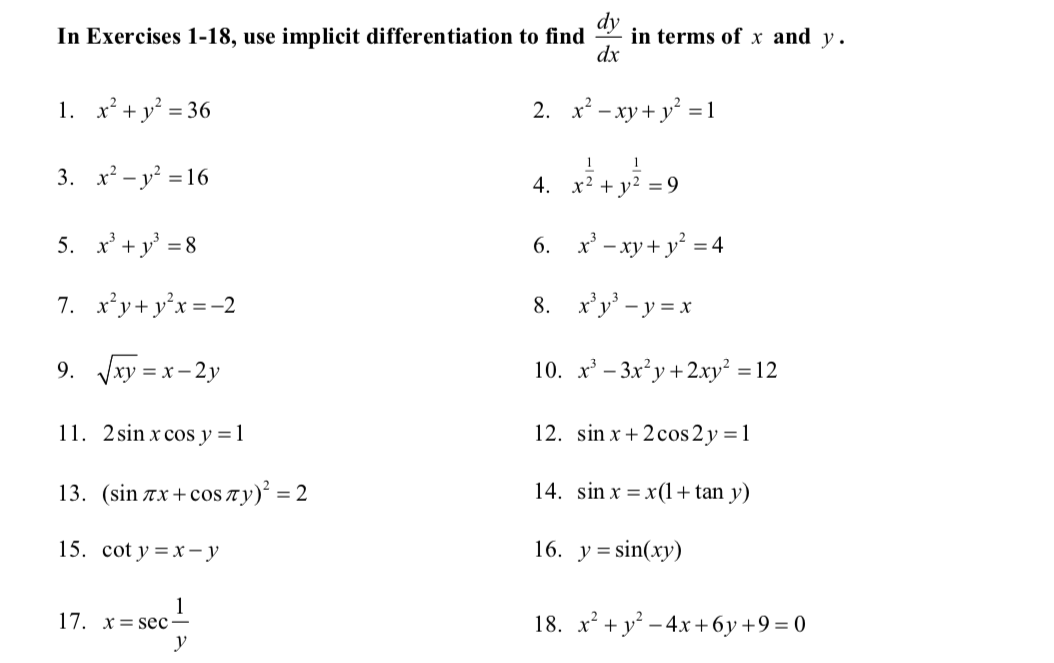



In Exercises 1 18 Use Implicit Differentiation To Chegg Com



If Xy Log X Y 1 Prove That Dy Dx Y X 2y X Y X Xy 2 X Y Sarthaks Econnect Largest Online Education Community



0 件のコメント:
コメントを投稿